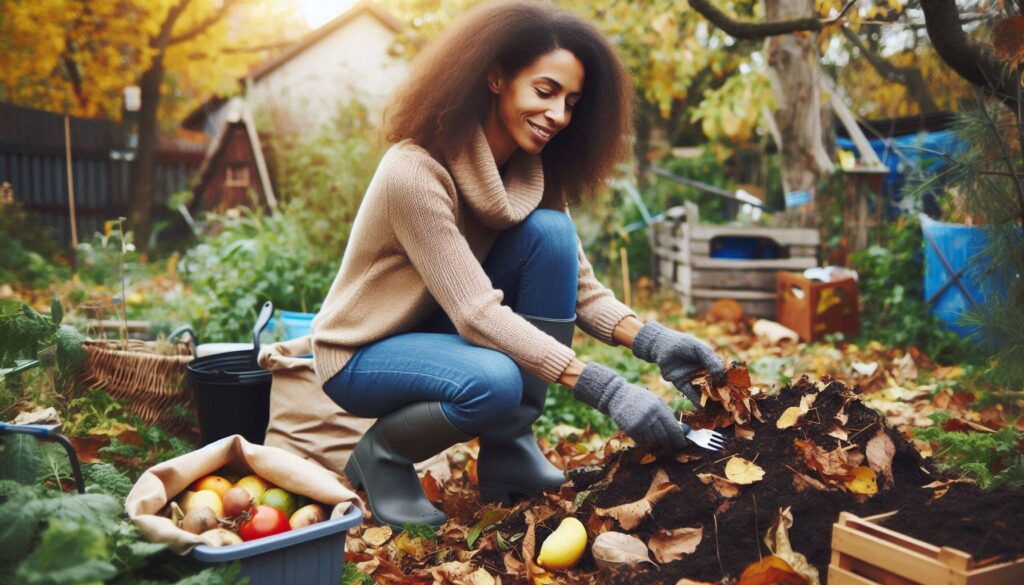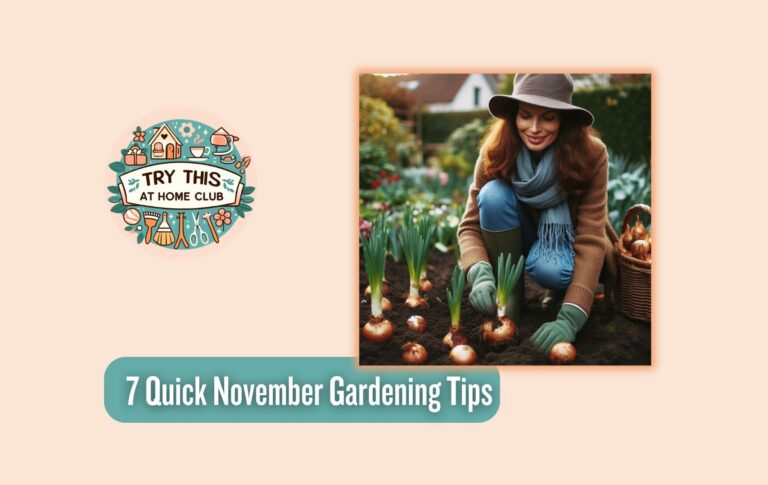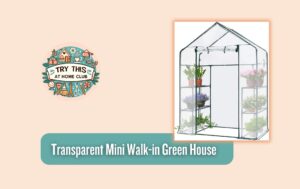November may feel like the quiet season in gardening, but it’s actually a fantastic time for beginners to complete easy, impactful tasks that set the stage for a vibrant garden come spring. If you’re new to gardening, these November gardening tips for beginners will make getting started fun, affordable, and surprisingly rewarding. From prepping the garden for winter to planning your spring layout, this guide will help you cultivate a thriving, beautiful space with just a few quick DIY efforts this month.
Table of Contents
1. Tidy Up Your Garden to Prepare for Winter
A tidy garden is the foundation for a healthy one. Fall clean-up doesn’t have to be extensive, but a little bit of preparation now can prevent future problems and make spring gardening a breeze.
Steps to Tidy Up:
- Remove Dead Annuals: Pull out dead plants and any leftover summer veggies that won’t survive the winter. This helps prevent pests and diseases from overwintering in your garden.
- Prune Perennials: Trim back perennials, but only those that will benefit, like hostas and peonies. Leave some seed heads (like coneflowers) for birds and winter interest.
- Clear Out Debris: Rake up fallen leaves, weeds, and any garden debris that could harbor pests. Use a leaf blower or rake for an easy clean-up.
Pro Tip: Compost these organic materials instead of throwing them away. They’ll break down into a natural fertilizer you can use next year.
2. Plant Spring Bulbs to Add Color Next Year
November is the perfect time to plant spring bulbs like tulips, daffodils, and crocuses. These low-maintenance flowers practically plant themselves and will add stunning bursts of color to your garden as winter fades.
How to Plant Bulbs in November:
- Choose the Right Bulbs: Look for bulbs that thrive in your climate and soil. Tulips, daffodils, and hyacinths are excellent choices for beginners.
- Plant with Ease: Dig a small hole 2-3 times as deep as the bulb, drop it in pointy-side up, and cover with soil.
- Spacing Matters: For a full, colorful display, plant bulbs about 4-6 inches apart.
Why Plant in November? The cool November soil encourages root growth before the ground freezes, setting bulbs up to bloom beautifully in spring.
3. Mulch Your Garden Beds for Healthier Soil
Mulching is one of the easiest, most budget-friendly ways to care for your garden over the winter. A simple layer of mulch insulates your soil, retains moisture, and helps prevent weeds.
Steps to Mulch:
- Pick Your Mulch: Straw, shredded leaves, or wood chips all work well and are cost-effective options. Shredded leaves are especially great because they’re often free!
- Apply Mulch Evenly: Spread a layer about 2-3 inches thick around your garden beds, especially around any plants you’re overwintering.
- Avoid Piling: Keep mulch a few inches away from the stems or trunks of plants to prevent rot and disease.
Mulching is an easy, affordable way to protect your soil and plants through winter, so come spring, they’ll be healthier and ready to grow.
4. Start Composting for Sustainable Gardening
Composting is a gratifying way to turn food scraps and garden waste into rich, nutritious soil. If you’ve been curious about composting but haven’t started, November is a great time to set up a simple system.

How to Start Composting:
- Choose a Spot: Pick a sunny spot in your yard, or opt for a compost bin if you prefer a more contained setup.
- Add Green and Brown Materials: Layer “green” materials (kitchen scraps, grass clippings) with “brown” materials (fallen leaves, paper). The mix of nitrogen and carbon-rich ingredients speeds up decomposition.
- Turn It Weekly: Give your compost a quick stir once a week to keep air circulating.
Budget-Friendly Tip: Composting reduces waste and saves money on fertilizers, making it a sustainable and budget-friendly gardening choice.
5. Protect Delicate Plants by Bringing Them Indoors
For plants sensitive to cold, November is the time to bring them indoors and give them a chance to survive the winter. With the right care, these plants can stay healthy until they’re ready to return outside in spring.
How to Overwinter Plants Indoors:
- Choose Candidates Carefully: Potted herbs, certain annuals, and tender perennials like geraniums or hibiscus are good candidates.
- Inspect for Pests: Check plants for any insects or diseases before bringing them inside.
- Find a Sunny Spot: Place your plants in a sunny location, or consider using grow lights if they don’t receive enough natural light.
Easy DIY Tip: Create an indoor herb garden with potted rosemary, basil, or parsley. It’s a functional and decorative addition to your home all winter long.
6. Sketch Out Ideas for Your Garden’s Future
Gardening success starts with planning, and November is an ideal time to dream up new ideas. By visualizing your garden layout now, you’ll be ready to hit the ground running next spring.
How to Plan Your Garden Layout:
- Start a Garden Journal: Use a notebook to jot down your ideas, sketch layouts, and keep track of plants you want to try.
- Identify Sun and Shade Areas: Make note of areas in your garden that get full sun, partial sun, or shade. This will guide your plant choices next year.
- Set Simple Goals: Think about what you want most out of your garden—colorful flowers, fresh vegetables, or pollinator-friendly plants—and jot down a list of potential projects.
Long-Term DIY Benefits: A garden plan saves time, money, and energy, giving you a clear path toward achieving your ideal garden space.
7. Try Planting Fast-Growing Veggies for a Quick Harvest
November may seem late in the year, but there are still some cool-season veggies that grow quickly enough to harvest before winter fully sets in.
What to Plant for a November Harvest:
- Pick Cold-Tolerant Crops: Lettuce, radishes, spinach, and kale are hardy vegetables that can handle a bit of chill.
- Use Containers if Needed: If your soil is already too cold, consider growing these veggies in containers that you can easily bring inside if temperatures drop.
- Enjoy a Late-Season Harvest: With fast-growing veggies, you can enjoy fresh, home-grown produce into late fall.
Planting cool-weather vegetables is a rewarding way to keep gardening through November and gives you a taste of home-grown goodness when you need it most.
Wrapping Up Your November Gardening Tips for Beginners
November gardening doesn’t have to be a complicated affair. With these November gardening tips for beginners, you can tidy up your space, plant bulbs for spring, mulch your beds, start a compost pile, bring tender plants indoors, plan your next season, and even enjoy a late-season vegetable harvest. Each of these tips is designed to make gardening easy, affordable, and gratifying for beginners, so you can experience the joy of a flourishing garden without feeling overwhelmed.
Embrace these small tasks as a way to unwind, connect with nature, and prepare for an even more rewarding gardening season ahead. The results will make you look forward to springtime even more and help you create a garden space that’s as beautiful as it is personal. Happy gardening!






